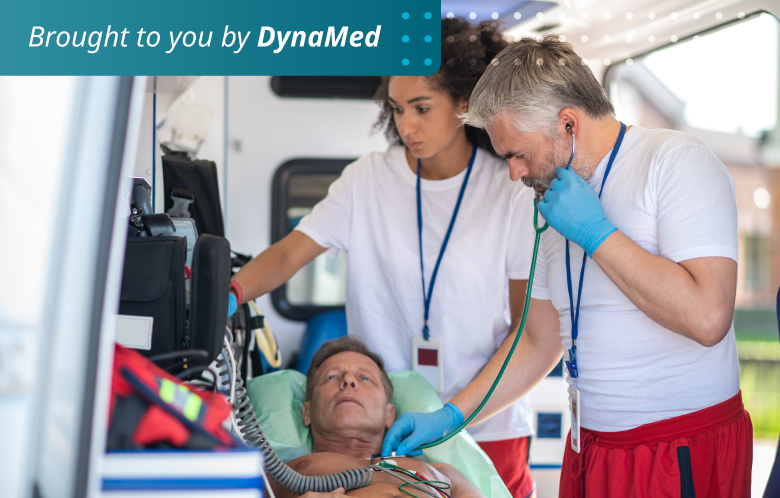Exposure to extreme heat is harmful to human health. As ambient temperatures rise with climate change and urban development, the detrimental effects of extreme heat are expected to increase. The Centers for Disease Control (CDC) already report that extreme heat is the cause of death for approximately 1,220 people in the United States each year. Between 2008 and 2020, the mean incidence of heat-related emergency department visits in the U.S. increased by an average of 2.85 percent per year.
Not all heat-related illnesses are life-threatening, but some are, and it is important to know when heat-related illness is a medical emergency.
|
Heat-related Illness |
Characteristics |
Is it a medical emergency? |
|
Heat Stroke |
Elevation of core body temperature ≥ 104 degrees F (40 degrees C) with malfunction of the nervous system such as confusion or delirium, loss of consciousness, sometimes presenting like a seizure or stroke |
Always; can progress to multiple organ failure |
|
Heat Exhaustion |
Independent of core body temperature, may consist of extreme fatigue, excessive sweating, sometimes nausea and vomiting, and weakness but no confusion |
Yes, if symptoms get worse or last > 1 hour; may progress to heat stroke |
|
Heat Cramps |
Usually affecting lower extremities |
Yes, if symptoms last > 1 hour or person has cardiovascular problems or is on a low-sodium diet |
|
Heat Syncope |
Transient loss of consciousness or collapse during heat exposure
|
Sometimes; unless person does not wake up or cannot remain in a cool place with adequate hydration |
|
Heat Rash |
Due to plugged sweat glands
|
Not usually |
|
Heat Edema |
Usually in the lower extremities in those who are newly exposed to hot environments |
Usually benign and self-limiting |
|
Heat Tetany |
Heat-induced cramps and paresthesia in the setting of hyperventilation |
Yes; further evaluation may be needed to rule out kidney problems or elevation of creatine phosphokinase (CPK) |
The goals of heat-related illness management are rapid cooling and support of organ system function.
For mild illness, passive cooling at the site of injury may be sufficient. For patients with heatstroke, if ice/cold-water immersion cooling is available at the initial site of care, this should be performed before transportation. In remote wilderness settings or if medically supervised cooling is available such as at some athletic competitions, this may be the best option.
For patients with a rapid and complete recovery from exertional heatstroke after cooling, some guidelines do not feel transportation to a hospital is always necessary. However, all guidelines agree that untreated heatstroke has an extremely high morbidity and mortality rate, and the definitive management is rapid and effective total body cooling. Immersion in ice water is the preferred choice. If not available, a second choice would be immersion in very cold water or dousing the person with ice-cold water. If none of these options are available but ice packs are, current guidance is to place ice packs on the cheeks, palms, and soles of patients rather than the previously recommended areas of the neck, underarms, or groin.
The urgency and level of treatment are dictated by the severity of the heat-related illness.
|
Heat-related Illness |
Cooling and Fluids |
Additional Management |
|
Heat Stroke |
Urgent cooling (within 30 minutes) is necessary along with oral or IV fluids. Remove patient from the heat source and use ice water immersion, if possible, with cold water immersion second best. (In emergency rooms, body bags are suggested to hold the water. When immersion is not possible, consider whole-body conductive cooling (with ice packs or cold-water sheets). |
Manage airway, breathing, and circulation. Consider transport to emergency department after cooling.
|
|
Heat Exhaustion |
Remove patient from heat source and use evaporative, convective, or conductive cooling. Give oral or IV isotonic or hypertonic fluids. |
Advise the patient to rest in a supine position and monitor their mental status.
|
|
Heat Cramps |
Remove the patient from the heat source and give oral fluids and electrolytes. |
Advise rest. |
|
Heat Syncope |
Remove patient from heat source and use passive cooling. Give oral or IV fluids. |
Advise the patient to rest in a supine position and monitor for cardiac risk. |
|
Heat Rash |
Have the patient remove clothing and use evaporative cooling. |
Administer glucocorticoid and antibacterial creams, as needed. Monitor for cellulitis and advise the patient to avoid hot environments and wear loose clothing. |
|
Heat Edema |
Remove the patient from the heat source and give oral fluids. |
Elevate legs and advise the patient to wear compression stockings. Diuretics are not indicated. |
|
Heat Tetany |
Give fluids and monitor for improvement. Discharge when the patient is feeling better. |
|
Educate patients at increased risk about heat-related illnesses.
The risk for developing a heat-related illness varies based on the heat index (what the temperature feels like to a person based on the temperature and relative humidity) as well as the activity, type and duration of exposure, one’s acclimation to heat, pregnancy, medical conditions (including but not limited to cardiovascular disease, diabetes, and respiratory diseases), use of certain medications (especially those that increase risk for hyperthermia and those with sedating properties), alcohol misuse, and sociocultural factors (including but not limited to low income, unstable housing, and limited worker protections).
In addition to keeping an eye on patients at increased risk for heat-related illnesses, it is important to educate all patients on the risks associated with exposure to extreme heat.
- HeatRisk Tool is a way for patients to assess their local heat risk by zip code.
- Infographic: Beat the Heat (PDF) offers basic information on how to prevent heat-related deaths.
- Heat-Related Illnesses handout from the CDC summarizes what to look for, and what to do if experiencing heat-related symptoms.
Heat-related illnesses can be preventable with adequate hydration, avoidance of physical activities (if possible) during extreme heat and understanding vulnerabilities and factors that increase individual risk.
Help your patients beat the heat by having a conversation about heat-related illnesses.



